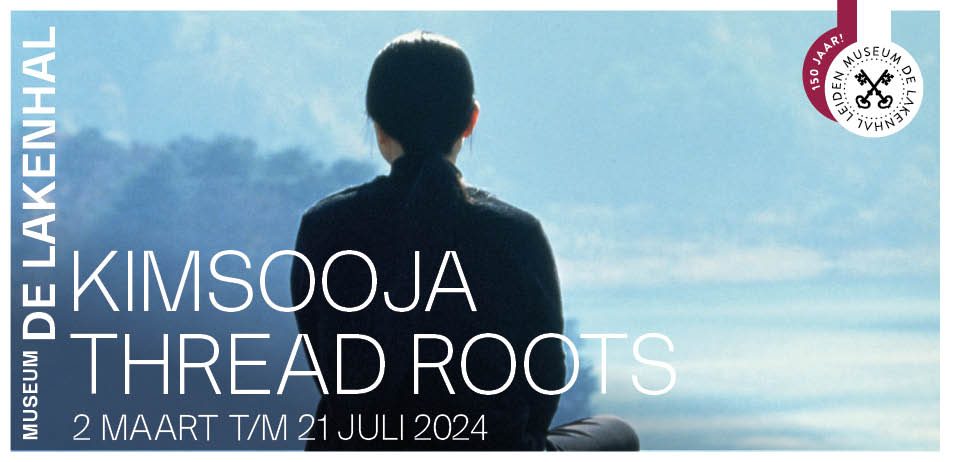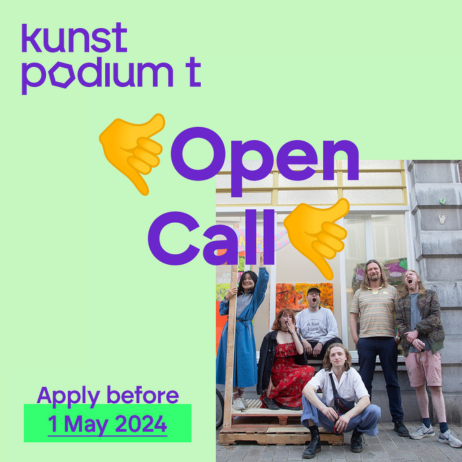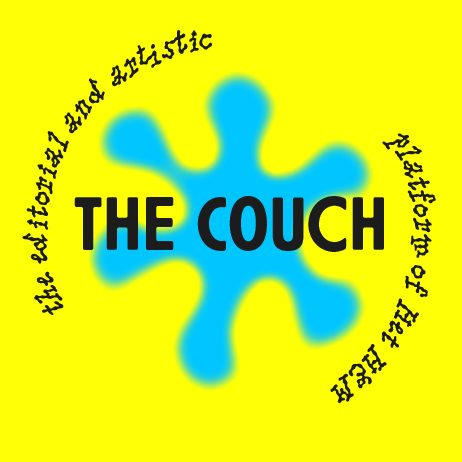Academiestudent in quarantaine: een filosofische handleiding (NL/EN)
Kunstenaar Ksenia Galiaeva geeft les op de Willem de Kooning academie. Voor haar studenten heeft ze een filosofische handleiding geschreven over het werkproces in tijden van isolatie. Om de kunstenaar een hart onder de riem te steken, publiceert ze de tekst vandaag ook op Mister Motley.
Nu we aan het wachten zijn tot de situatie stabiliseert of verandert, heb ik een paar ideeën die misschien kunnen helpen om wat werk gedaan te krijgen zonder veel druk te ervaren.
De focus ligt hier op ‘hoe’ in plaats van ‘wat’. Hoewel deze manier van werken niet bij iedereen past, hoop ik dat het tenminste kan aansporen om bewust op zoek te gaan naar de juiste omstandigheden om een creatief proces in gang te kunnen zetten. Als deze methodes voor jou niet werken, kun je ze als beginpunt gebruiken om te zoeken wat dan wel werkt.
De situatie waarin we zitten is zowel rustig als verontrustend, vertrouwd maar vervreemdend. Misschien kunnen we het zien als een simulatie van een artist residency. Alsof je met een goed voorbereid plan bij een nieuwe plek aankomt, dat aldaar opeens onuitvoerbaar blijkt te zijn, om welke reden dan ook. De truc is om niet gefrustreerd te raken door alle dingen die je niet kan doen, maar om open te staan voor de onverwachte mogelijkheden die de nieuwe context kan bieden.
‘’Hoe meer je jezelf beperkt, hoe vruchtbaarder je wordt in uitvinden’’, aldus de Deense filosoof Søren Kierkegaard. Ik geloof dat om productiever te kunnen werken, om onzekerheid, twijfel en zwakte als constructieve ingrediënten te kunnen inzetten, er eerst vaste grond nodig is. Gewoontes, dagelijkse automatismen, routines – al deze comfortabele vertrouwdheden kunnen van hulp zijn om ruimte vrij te maken voor denkavonturen. De microkosmos van een vertrouwde omgeving kan een stevige basis bieden om veranderingen te herkennen, accepteren en initiëren.
Ik kan me voorstellen dat de huidige situatie inefficiënt lijkt en je jezelf nutteloos voelt zonder de steun van je ‘professionele’ omgeving, gereedschap, werkplaatsen en mensen. Denk eraan dat het gevoel van nutteloosheid ons allemaal bekend is, dat staat los van je beroep of sociale positie, maar het geldt voornamelijk voor mensen in creatieve beroepen, die geen vaste maatstaven voor kwaliteit kennen. Het is ook mogelijk dat dit gevoel van ‘niet goed genoeg zijn’ of ‘doen’ kan escaleren in een tijd van isolement, zoals bij mij gebeurde. Kijk even naar het ‘imposter syndroom’, voel je niet schuldig en parkeer je verwachtingen tot betere tijden.
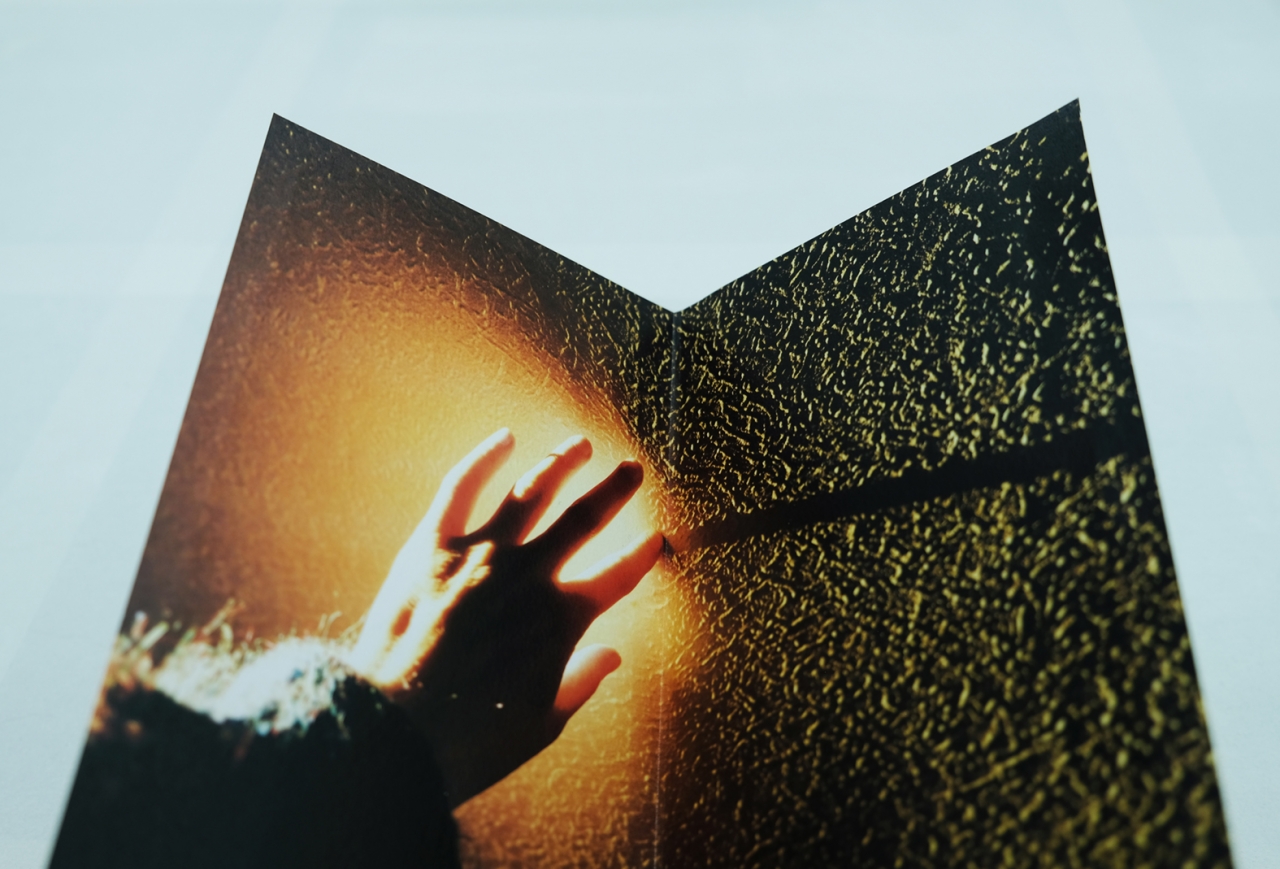
Werken met wat je hebt
Kennis versus informatie
In zijn boek The Scent of Time maakt de Koreaans-Duitse filosoof Han Byung-Chul onderscheid tussen informatie enerzijds en kennis en ervaring anderzijds. Informatie kan opgeslagen en teruggehaald worden en wordt daardoor onttrokken van geheugen en tijd. Daarentegen zijn kennis en ervaring tijdsintensief: deze ontlenen hun kracht aan de toekomst en het verleden en zijn open voor verassingen. Zo niet, dan ‘bevriest’ het subject van ervaring en is het niet meer dan een arbeider die de tijd wegwerkt, zonder zichzelf te veranderen. Moderne versnelling van het leven staat in de weg voor het ontstaan van afwijkende onafhankelijke ideeën, doet het heden krimpen en de tijdsduur verdwijnen. Versnellingsprocessen worden richtingloos en, door dat gebrek aan richting, zinloos.
Tijdsduur
De Franse filosoof Henri Bergson introduceerde het begrip ‘la durée’, de innerlijke tijd: tijdsduur, geleefd door ons bewustzijn, met een eigen ritme dat niet bepaald wordt door de kloktijd. Deze psychologische tijdsduur, een persoonlijk, golvend ritme van de tijd, perst de overvloed van momenten die vanuit het verleden in het heden en de toekomst glijden samen (net zoals in ‘kennis’). Onze subjectieve tijdsduur is slechts één uit oneindigheid van de mogelijke tijdsduren waarmee het soms kan overlappen en synchroniseren. Binnen de tijdsduur vindt onmiddellijke perceptie plaats, gelijktijdig naast het geheugen, het heden naast het verleden. Precies tijdens deze spacing out momenten krijgt alles wat ik zie een betekenis.
Autoplagiarisme
In zijn artikel Speak, Memory (de titel verwijst naar de autobiografische roman van Vladimir Nabokov) schrijft Oliver Sacks over autoplagiarisme. Hij zegt dat hij vaak, als hij iets nieuws bedenkt, hetzelfde idee later tegenkomt in zijn oude notities. ‘Elke keer herontdek ik mijn thema’s en ze lijken mij gloednieuw. Dit soort vergetelheid is wellicht noodzakelijk voor een creatieve en gezonde cryptomnesie, die het mogelijk maakt om oude gedachten te herschikken, hercoderen, opnieuw te categoriseren, om de nieuwe implicaties ervan te zien. Want creativiteit heeft dit soort vergetelheid nodig om de herinneringen en ideeën opnieuw te doen baren, om ze in nieuwe contexten en perspectieven te zien.’
Autocommunicatie
De meest herkenbare beschrijving van mijn eigen creatieve proces vond ik in de theorie van autocommunicatie van Joeri Lotman, cultuurhistoricus en belangrijk figuur in de Russische semiotiek. ‘Autocommunicatie verwijst naar een subject dat de informatie niet naar een ander persoon stuurt, maar terug naar zichzelf.’ Deze complexe, interne dialoog organiseert de verwarrende associaties die zich in het bewustzijn ophopen en bouwt individuele betekenissen op. Volgens Lotman wordt de persoonlijkheid in autocommunicatie gereorganiseerd door overmatige herhaling, die een forse creatieve kracht heeft. Deze verandering in persoonlijkheid is ook genoemd door Han Byung-Chul. Het proces van denken in autocommunicatie is contemplatief en meditatief, met een onvoorspelbare uitkomst.
Herhaling
In zijn bekendste boek De Ambachtsman beschrijft Richard Sennett twee manieren van leren door herhaling: een daarvan is het herhaling-ritueel: niets kan worden veranderd, precies dezelfde bewegingen worden herhaald. Actie wordt meditatie en verliest betekenis, doel en tijdsgevoel wordt zodoende gedachteloos. De tweede manier is flexibeler: je leert door herhaling, maar interpretatie, voortgang en afwijking zijn toegestaan. We hebben het hier over de herhaling-evolutie. Het vermogen om je te concentreren voor langere tijd is belangrijk. Alleen dan zou je emotioneel en intellectueel volledig betrokken kunnen raken bij de handeling.
Om het samen te vatten:
Accepteer je tijdsflow, je gevoel, of het verliezen van de tijd, door je onder te dompelen in je omgeving of activiteit. Heb vertrouwen in je kennis – je ervaringen, herinneringen, je vaardigheden, je archiefmateriaal. Als je denkt dat je informatie of gereedschap mist, bedenk dan dat je nog altijd je kennis hebt: je kennis bepaalt voor een deel je identiteit en is jouw eigendom. Zoek je oude aantekeningen of bestanden op, daar zou je precies de nodige aanwijzingen kunnen vinden. Vertaling – een karakteristieke vorm van autocommunicatie en hercodering – kan worden uitgevoerd in taal, medium of aanpak. In het geval van Sennett, verwissel je het ‘leren’ door ‘doen’. ‘Herhaling’ is het sleutelwoord en het kan je in een meditatieve staat of flow brengen. Praat met jezelf, kijk naar de wolken, dagdroom en herhaal.

Intuïtie en verveling
Intuïtie
Filosoof Gilles Deleuze bedacht een methode om problemen op te lossen. Mijn losse interpretatie van zijn methode luidt als volgt: Alleen intuïtie beslist wat wel of niet waar is in het geconstateerde probleem; van niet-ware problemen zijn er twee soorten: ‘niet-bestaande problemen’ en ‘slecht gestelde vragen’; een probleem wordt, wanneer correct geconstateerd, uit zichzelf opgelost. Los problemen daarom op in termen van tijd in plaats van ruimte. Om intuïtie als methode te gebruiken lijkt er een zekere mate van passiviteit en mijmering nodig, om ‘onszelf naar een breder bewustzijn te verplaatsen, om weg te gaan van actie richting de droom’ (Bergson); om de problemen weg te laten smelten in plaats van ze actief op te lossen.
Uit eigen ervaring merk ik dat de meeste oplossingen en patronen verschijnen tijdens de vage, dromerige momenten van half-bewustzijn; als ik aan het douchen ben, in slaap val of net wakker ben, of een wandeling maak. Ik kan opeens een inzicht krijgen tijdens het lezen van een boek of terwijl ik een film kijk, als ik uit het raam kijk of tijdens een andere passieve activiteit, zolang ik mijzelf niet forceer om het probleem op te lossen. Al deze situaties zijn ook de typische voorbeelden van een tijdsduurervaring.
Verveling
In een ‘wetenschappelijke blog’ van Jonah Lehrer las ik over voordelen van dagdromen. Zijn manier van probleemoplossing is vergelijkbaar – middagdutjes, lang onder de douche staan, of een Russische roman lezen. Het verveelde brein blijkt heel actief te zijn als het zich bezighoudt met het genereren van dagdromen en mentale tijdreizen. Er wordt een uitgebreide elektrische communicatie uitgevoerd tussen de voor- en achterdelen van het brein, wanneer de hersenen werken aan nieuwe verbindingen tussen de schijnbaar niet-verwante onderwerpen. Terwijl de cortex op een ontspannen manier aan het denken is, begint het zijn eigen innerlijke database te verkennen in plaats van te reageren op de buitenwereld. Het verveelde brein lijkt zichzelf van vermaak te voorzien. De timelapse video’s van neuronen die nieuwe connecties maken lijken erg op een live opname van een schilderij – gemaakt door een onzichtbare Jackson Pollock. Dit is waarschijnlijk wat Kierkegaard bedoelde met het effect van beperken, Han Byung-Chul met ‘kennis’, of Oliver Sacks met het ‘hercoderen’ – het herschikken van het interieur van het brein voor een nieuwe ruimtelijke ervaring.
Een product van herhaling
De Russische dichter Joseph Brodsky vergelijkt het gevoel van verveling met een psychologische Sahara (we gaan weer mentaal reizen). In In Praise of Boredom, een zowel poëtische als informatieve tekst, die ik zou aanraden om volledig te lezen, is verveling beschreven als een product van herhaling. Voor Brodsky is herhaling het hoofdmedium van het leven. Verveling is een raam van eigenschappen van de tijd en ‘de les in je eigen nietigheid’: ‘Je bent nietig omdat je eindig bent. Maar oneindigheid is niet erg levendig, niet erg emotioneel. Dit is wat de verveling je vertelt. En hoe vergankelijker het onderwerp is, hoe meer het is geladen met het leven, emoties, vreugde en mededogen.’
Passiviteit
Angst bracht Kierkegaard vrijheid en mogelijkheden: ‘’Het individu wordt zich werkelijk bewust van zijn potentieel door het ervaren van angst.’’ Mijn favoriete schilder Pierre Bonnard klaagde vaak over zijn gebrek aan energie en wilskracht. Maar het is juist deze passiviteit, dit gevoel van volledig overweldigd te zijn door sensatie, herinnering en twijfel – het door Picasso beschreven ‘potpourri van besluiteloosheid’ – dat de grond is van Bonnards schilderijen en hun belangrijkste aantrekkingskracht.
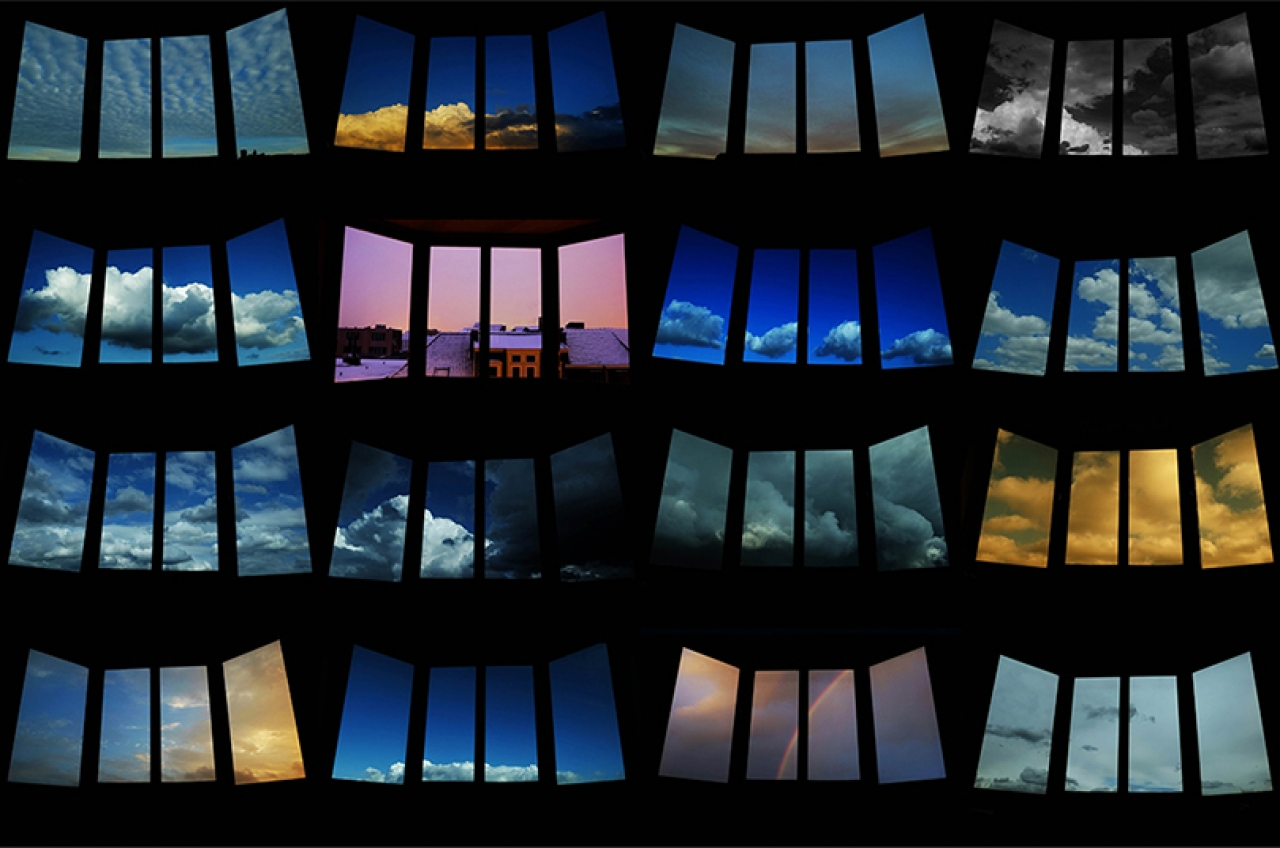
Het loslaten van verwachtingen en inhoud
Het mogelijke en het virtuele
Gilles Deleuze beschrijft het verwachtingspatroon via het verschil tussen het mogelijke en het virtuele:
De mogelijkheid kan maar twee uitkomsten hebben. Het kan overgaan in werkelijkheid – dan horen de denkbeeldige mogelijkheid en de werkelijkheid sterk op elkaar te lijken, of het wordt niet gerealiseerd en laat ons met een gevoel van teleurstelling (of opluchting) achter. Het probleem van het mogelijke ligt in de specifieke psychologische motieven van de verwachting. Wanneer iets of iemand onze verwachtingen niet beantwoord, ervaren we het als een gebrek, tekortkoming, afwezigheid van wat ons interesseert in plaats van te kijken van wat er dan wel is. Het virtuele daarentegen verwijst naar het oneindige hoeveelheid van uitkomsten die er zijn zonder dat we het door hebben. Daarom moeten ze volgens Deleuze niet gerealiseerd worden (omdat ze er al zijn) maar geactualiseerd. Hoe te actualiseren wordt er niet bij verteld, maar ik denk, vooral door open te zijn voor dingen die we niet direct zien of kunnen voorspellen. In mijn interpretatie is de rigide ja-of-nee logica van een mogelijkheid – ‘kant-en-klaar, voorgevormd, al voor zichzelf bestaand’, zoals Deleuze zegt – het domein van bewustzijn en lineariteit (niet zo creatief). Het is gericht op de uitkomst, terwijl het veelvoud van het virtuele hoort bij intuïtie en non-lineariteit, mede ’actueel’ gemaakt door de openheid in het werkproces (wel creatief).
Leegte
In de tekst Shanzhai: Deconstruction in Chinese legt Han Byung-Chul de dynamiek van transformatie van een kunstwerk als levend organisme uit. In het Westen wordt ervan uitgegaan dat de transformatie voort komt uit de innerlijke rijkdom en gelaagdheid van het werk – het verandert zichzelf van binnenuit, maakt zichzelf levend en past zich aan. Het Oosters kunstwerk daarentegen is leeg en plat, zielloos en daardoor open voor overschrijving en toevoeging. ‘Het is niet het inwardness van de essentie, maar de outwardness van traditie of situatie, die de veranderingen aanstuurt’. Alternatief aan de gedachte van integriteit van een kunstwerk dat trouw aan zichzelf is, wordt de essentie hier beschouwd als leegte (void), een scherm waarop geprojecteerd mag worden.
Een praktische vertaling:
‘Het virtuele’ is een ingewikkelde manier om te zeggen dat de uitkomst onvoorspelbaar is, zolang het niet wordt uitgevoerd. Probeer verschillende benaderingen bij het maken van een werk zonder je te focussen op het resultaat. Geen verwachting betekent geen teleurstelling, en misschien word je verrast. Het zou mij momenteel te veel druk opleveren om de ‘innerlijke rijkdom en gelaagdheid’ in het werk te moeten bereiken. Als je je niet meer afvraagt: ‘is het goed genoeg?’ en ‘ben ik trouw aan mijzelf?’ (of: is authenticiteit overschat?), dan heb je waarschijnlijk een groter speelveld. Het oriëntale concept van verandering is contextueel en situatie specifiek, dat wil zeggen dat de betekenis van het werk niet vast staat maar wordt geprojecteerd afhankelijk van de situatie. Dus mijn voorstel zou zijn: gooi je concept of de inhoud weg, al is het voor een korte periode. Volg de logica van het materiaal waarmee je werkt, of doe gewoon iets dat aangenaam en geruststellend voelt. Kijk hoe je onderwerp na enige tijd vanzelf anders wordt en of het nog steeds relevant is, aangezien de prioriteiten momenteel in snel tempo veranderen.
Ik vraag me af of het mogelijk is om echt anders uit de quarantaine te komen, deze handleiding is een voorzichtige poging. Maar het belangrijkste voor nu is: blijf gezond en wees voorzichtig.
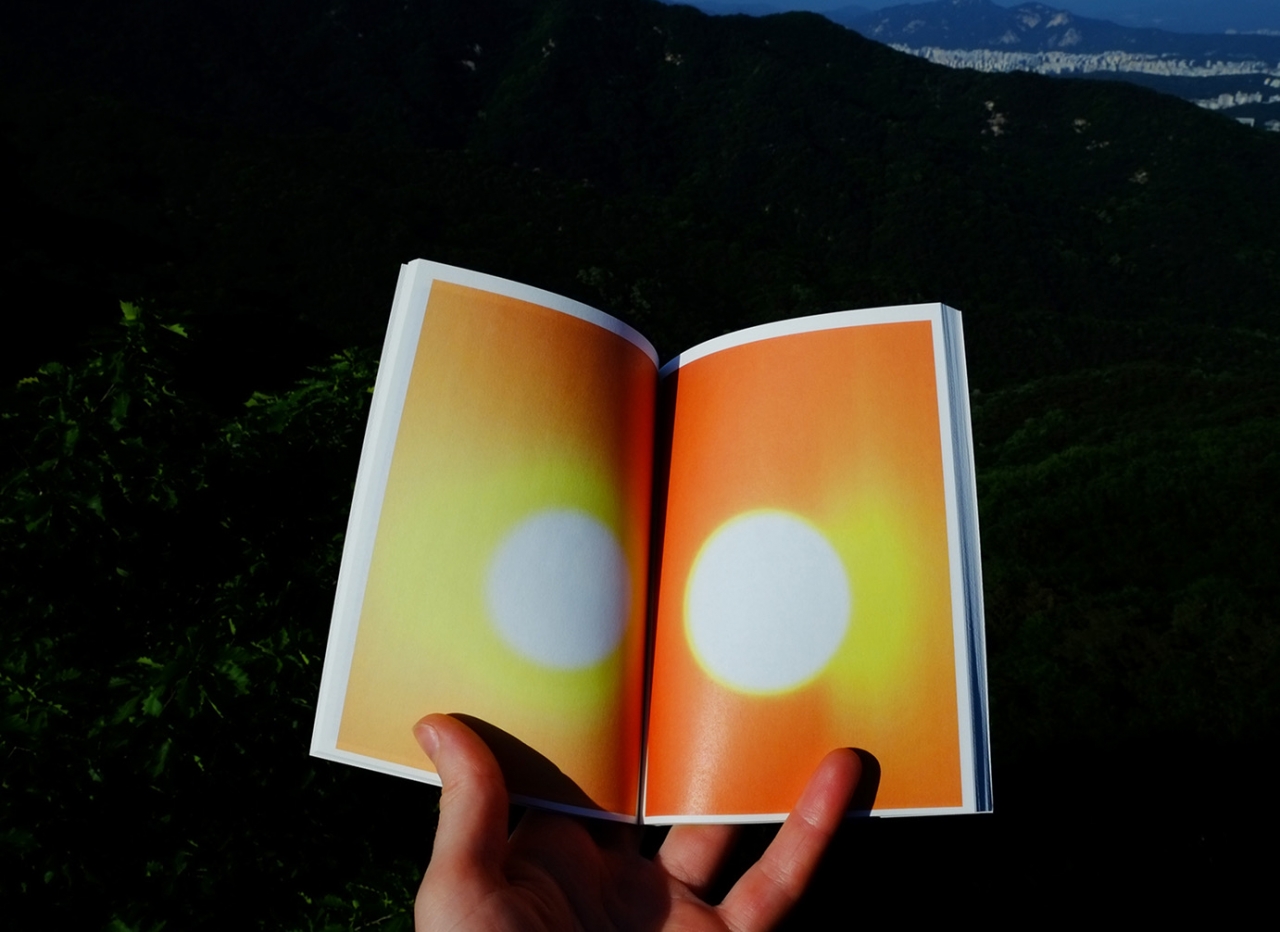
English
As we wait for things to stabilize, or change, I have a couple of suggestions that might help to get things done without experiencing too much pressure. The focus point here is on ‘how’ and not on ‘what’. It might not fit everybody’s way of working, but I hope it can offer more insight and acceptance of one’s process, awareness of whatever conditions one needs to trigger creativity. If those methods don’t work for you, use them as reference to find out which ones will.
The situation we are in is both unsettling and quiet, familiar (that is, if you are at home) and alienating. Maybe we can see this as a simulation of an artist residency, when you arrive to a place with well-made plans but cannot proceed with any of them because of …. (name your reasons). The trick is not to get frustrated by all the things you cannot do, but to be open to the often-unexpected possibilities the situation can offer you. Take your time to adapt and let the possibilities present themselves.
‘The more you limit yourself, the more fertile you become in invention,’ said Søren Kierkegaard. It is my firm belief that to be able to work productively, to use uncertainty, doubt and weakness as constructive ingredients, one needs some steady ground to stand on. Habits, daily automatisms, routines – all those comfortable familiarities can clear the space for adventures of thinking, just like a good night’s sleep. The micro cosmos of familiar surroundings might offer a firm ground to recognize, accept and initiate changes.
I can imagine that the current situation seems inefficient and you yourself feel inadequate (or useless) without the support of certain tools, places or people – your ‘professional’ surroundings. Please remember that this feeling of being inadequate is familiar to all of us in different professions and job positions, and especially within creative professions where the standard quality is not set in stone. It is also possible that this feeling of inadequacy escalates now during the time of home confinement and social distancing, as it does with me. Check the ‘impostor syndrome’, don’t feel guilty and park your expectations until the times become more stable.
Working with what you have.
Knowledge vs information:
In his book ‘The Scent of Time’ Han Byung-Chul, a Korean-German philosopher, distinguishes between information and knowledge. If information can be stored and retrieved and is deprived of memory and therefore time, the knowledge and experience are time-intensive, deriving their force from the past and the future, open to the surprises of what is coming. If not, the subject of experience ‘freezes, and becomes a labourer, someone who merely works away time, without changing himself’ (I will come back to that). The modern acceleration of life prevents the emergence of deviating independent forms, causes the present to shrink and duration to disappear. The acceleration processes become directionless, and through this lack of direction it becomes useless as time ‘tumbles on like an avalanche’.
Duration:
Henri Bergson introduced the term la durée, the ‘inner time’ – the duration lived by our consciousness, with its own determined rhythm that is different from clock time. This psychological duration, the personal fluctuating rhythm of time flow compresses the multitude of moments of the past gliding into the future (as in ‘knowledge’). Our subjective duration is but one among the infinity of other possible durations, which sometimes can partly overlap and synchronize. In duration, immediate perception coexists with memory, as the past coexists with the present. For me, it is exactly that kind of a trippy moment when everything I see makes sense.
Autoplagiarism:
Oliver Sacks, in his article ‘Speak, Memory’ (referring to the autobiographical novel by Vladimir Nabokov), mentions autoplagiarism. He says that sometimes, when he thinks of something new, he later finds the same idea in his old notes. ‘I discover my themes afresh each time, and they often seem to me brand-new. This type of forgetting may be necessary for a creative or healthy cryptomnesia, one that allows old thoughts to be reassembled, retranscribed, recategorized, given new and fresh implications… For creativity may require such forgettings, in order that one’s memories and ideas can be born again and seen in new contexts and perspectives.’
Autocommunication:
The most relatable description of my own creative process I have found was the theory of autocommunication, suggested by Yuri Lotman, a culture historian, the main figure of Russian semiotics, and a very kind person. ‘Autocommunication refers to the case in which the subject does not transmit information to another person but directs it back to him- or herself.’ This complex internal dialogue organizes the disordered associations which accumulate in the individual consciousness and builds up individual meanings. According to Lotman it reorganizes the personality that engages in autocommunication through excessive repetition that becomes a powerful creative force. This change in personality is also mentioned by Han Byung-Chul. The process of thinking in autocommunication is a contemplative, meditative state, with an outcome that is often unpredictable.
Repetition:
In his most popular book ‘The Craftsman’ Richard Sennett describes two ways of learning by repetition: one is repetition-ritual – nothing can be changed, you repeat exactly the same movements, action becomes meditation, loses meaning, purpose, sense of time, becomes mindless; the other mode is more flexible – you learn through repetition but interpretation, progress, deviation are allowed – repetition-evolution. The ability to concentrate for longer periods is important – only if a person can do so will he or she become involved emotionally or intellectually.
To summon this up:
Accept your personal time flow, your personal sense (or loss) of time – by being immersed in your surroundings or whatever activity you are doing. Rely on your knowledge – your experiences, your memories, your abilities, all the materials in your archives. Thought you might think you lack information or tools, knowledge is a part of your identity and something you already own. Find your old notes or files – they might give you just the insights that you need. Translation, as a characteristic form of autocommunication and re-coding, can be done in terms of language, medium or approach. In Sennett’s case, swap the word ‘learning’ for ‘doing’. The key word is ‘repetition’, which can bring you in a meditative state, or a flow.
Talk to yourself, stare at clouds, daydream and repeat.
Intuition and boredom.
Intuition:
Gilles Deleuze offers a method of problem solving, here in my own free arrangement:
1. Only intuition decides between the true and the false in the problems that are stated;
2. False problems are of two sorts: ‘non-existent problems’ and ‘badly stated questions’;
3. A problem, when it is properly stated, tends to be solved on its own accord;
4. Therefore, state problems and solve them in terms of time rather than of space.
It seems that by using intuition as a method one needs a certain amount of passivity and reverie, to ‘transport ourselves to a wider plane of consciousness, to go away from action in the direction of dream’ (Bergson); to let the problems dissolve rather than to try and solve them.
From my own experience, I’ve noticed that most of the solutions and patterns appear to me during the dreamy and vague moments of half- consciousness, when I am taking a shower, waking up or falling asleep, taking a walk. I can come across a needed clue while reading fiction or watching a film, looking out of the window, or during any other passive activity, as long as I ignore the problem that needs to be solved. All those situations are also typical conditions of a duration experience, the inner dialogue.
Boredom:
I’ve read an ‘science blog’ by Jonah Lehrer on the virtues of daydreaming – his tricks for problem-solving are afternoon naps and long showers, or reading a Russian novel, famous for being very thick. It said that the bored brain is actually incredibly active, as it ‘generates daydreams and engages in mental time travel. There seems to be an elaborate electrical conversation between the front and rear parts of the mind, and the brain is busy generating new connections between seemingly unrelated ideas. Instead of responding to the outside world, the cortex starts to explore its inner database, as it starts to think in a more relaxed manner’. The bored brain takes care of its own entertainment, it seems. The time-lapse videos of neurons making new connection, which can be found on YouTube, look like paintings in process being made by invisible Jackson Pollock. This is probably what the inventive Kierkegaard meant by limiting himself, Han Byung-Chul by knowledge, or Oliver Sacks by retranscribing – reshuffling the mind’s furniture for better interior design.
Life’s medium:
Joseph Brodsky compared the feeling of boredom to the psychological Sahara (talk of mental travel). In his ‘In Praise of Boredom’, a text both poetic and informative, which I would advise you to read fully, boredom is described as product of repetition which he sees as the life’s main medium. Boredom is a window on the properties of time and ‘the lesson of your utter insignificance’: ‘You are insignificant because you are finite. Yet infinity is not terribly lively, not terribly emotional. Your boredom, at least, tells you that much. And the more finite a thing is, the more it is charged with life, emotions, joy, fears, compassion.’
Passivity:
For Kierkegaard, angst offered freedom and possibility: ‘An individual becomes truly aware of their potential through the experience of anxiety.’ – though it sounds like a cliché of a troubled artist. Pierre Bonnard, my favorite painter, often complained of his lack of energy and willpower, but it is precisely this passivity, the feeling of being completely overcome by sensation, memory and doubt – dissed by Picasso as a ‘potpourri of indecision’ – that is the basis of Bonnard’s painting and its main virtue.
Outspoken or not, vulnerability is what we all now share.
Here is another method of problem solving: facing one’s fears and phobias (but without cultivating them), using them, turning them into a reason for action and creativity makes things bearable and even pleasurable. ‘He who sings is not always happy’ (Bonnard), but singing definitely helps.
Letting go of expectations, letting go of content.
The possible and the virtual:
Gilles Deleuze describes the difference between the possible and the virtual as follows: the expected possibility can have two outcomes – it either ‘passes’ into the real, and the real is supposed to resemble it, or it ceases to exist if not realized, leaving us with a feeling of disappointment or relief. The problems of the possible lie in the particular psychological motives for the operations, ‘such as when a being does not correspond to our expectation and we grasp it purely as a lack, the absence of what interests us.’ Similar assumptions, or psychological projections we often have when dealing with people.
The virtual, on the other hand, already possesses its own reality; it does not have to be realized, but rather actualized. ‘Evolution takes place from the virtual to actual. Evolution is actualization, actualization is creation.’
As I understand it, the more rigid yes-or-no logic of a possibility – ‘ready-made, preformed, pre-existent to itself’ (Deleuze) – is the domain of consciousness and linearity, focused on the outcome, whereas the multiplicities of the virtual are that of intuition, the work process as actualization.
Void:
In ‘Shanzhai: Deconstruction in Chinese’ Han Byung-Chul explains the dynamics of transformation of an art work as a living organism:
In the West the transformation is considered to come from the inner richness and depth of the work – it changes itself from within, making it living and adaptable. By contrast, the Oriental art work itself is empty and flat, without soul, and thus open for transcriptions and additions. ‘It is not the inwardness of the essence but the outwardness of the tradition or the situation that drives the change onward’. Alternative to the idea of integrity of the work being true to itself, the essence here is seen as a void, a screen open for projections.
A possible practical translation:
Try many different approaches without focussing on the result. No expectation = no disappointment, and you might be surprised by what comes out. Achieving the ‘inner richness and depth of the works’ seems to me too much pressure at the moment. If you stop asking yourself ‘is it good enough?’ or ‘am I true to myself?’ (is authenticity overrated?) – it might give you a bigger field to play around. The Oriental concept of change is contextual and situation-specific, that is – the meaning is not fixed, but projected depending on the situation. So, my suggestion would be – ditch the concept or the content, even if it is for a short period. You can follow the logic of the material you choose to work with, or just do something pleasant and comforting. See how the subject changes by itself after some time and if it is still relevant, as the priorities are shifting drastically.
I really wonder if we will emerge from quarantine as changed as we might be in theory. But for the time being: be well and take care.
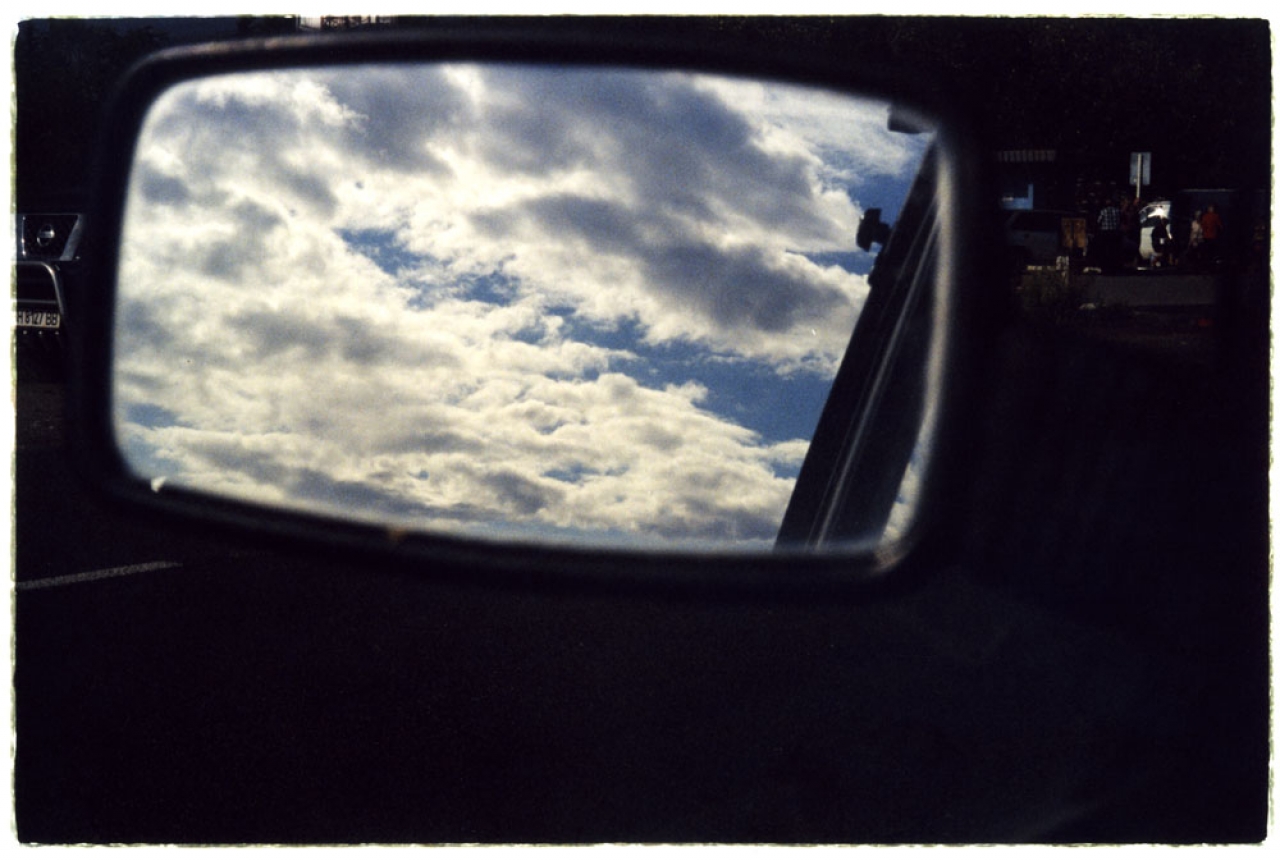
Referenties en links in volgorde van verschijning:
References and links in order of appearance:
Han Byung-Chul, ‘The Scent of Time’
Henri Bergson, ‘Matter and Memory’
Oliver Sacks, ‘Speak, Memory’(The New York Review of Books)
Yuri Lotman, ‘Semiosphere’
Yuri Lotman, ‘Culture and Explosion’
Yuri Lotman, ‘The Unpredictable Workings of Culture’
Richard Sennett ‘The Crafsman’
Gilles Deleuze, ‘Bergsonism’
Jonah Lehrer quotes come from his articles in Wired and the New Yorker (‘The Virtues of Daydreaming’)
Joseph Brodsky, ‘In Praise of Boredom’ (adapted from Dartmouth College commencement address, 1989)
Han Byung-Chul, ‘Shanzhai: Deconstruction in Chinese’
Ksenia Galiaeva, Carpets, 2014
